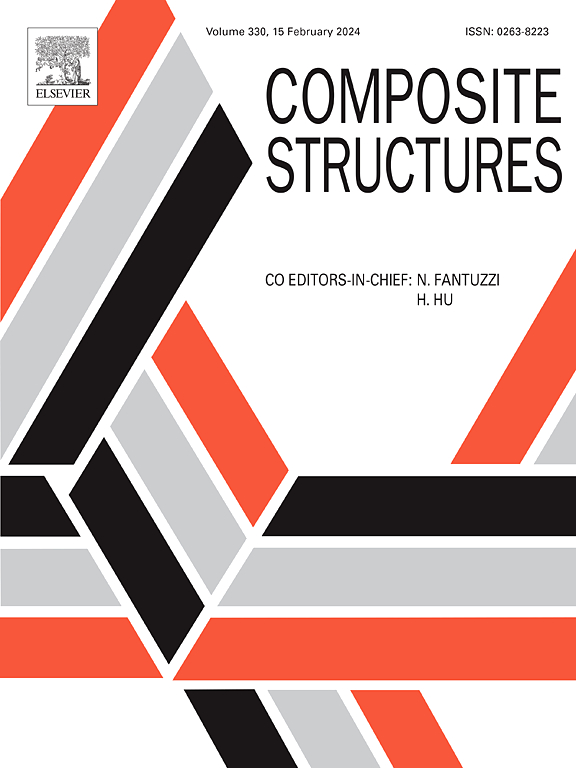Analytical modelling of the load-transfer length and the crack width evolution of Textile-Reinforced cementitious (TRC) matrix composites
IF 7.1
2区 材料科学
Q1 MATERIALS SCIENCE, COMPOSITES
引用次数: 0
Abstract
This paper delineates the development of two analytical models concerning two parameters of Textile-Reinforced Cementitious matrix composites (TRC): load-transfer length and crack width. Load-transfer length is defined as the segment where load shifts from the textile to the matrix, thereby influencing crack number, spacing, and width of TRC. The models consider the mechanical and geometrical properties of TRC, the interlayer thicknesses, the damage energy dissipation, and the shear at the textile-to-matrix interface.
The validation process entailed a comparison of the models with experimental data derived from nine TRC configurations, incorporating diverse matrices, textiles, and reinforcement ratios. Embedded distributed fibre optic sensors in TRC were utilised to monitor the textile and matrix strains, thereby facilitating the measurement of the load-transfer length. Digital Image Correlation was employed to assess crack widths. Subsequently, a parametric study was conducted to investigate the impact of TRC components on these parameters.
The findings of this study indicate that stronger textile-to-matrix bonds, higher textile and matrix stiffness, and increased reinforcement ratios reduce transfer length and crack widths. However, increasing matrix strength results in wider cracks. These insights will aid in optimising material choices and textile layouts for TRC, thus enhancing its use in strengthening civil engineering structures.
纺织增强胶凝(TRC)基复合材料载荷传递长度和裂纹宽度演化的分析模型
本文介绍了纺织增强胶凝基复合材料(TRC)载荷传递长度和裂纹宽度两个参数的解析模型的发展。载荷转移长度定义为载荷从织物转移到基体,从而影响TRC裂纹数、间距和宽度的段。该模型考虑了TRC的力学和几何特性、层间厚度、损伤能量耗散以及织物-基体界面处的剪切作用。验证过程需要将模型与来自九种TRC配置的实验数据进行比较,包括不同的矩阵,纺织品和增强率。在TRC中使用嵌入式分布式光纤传感器来监测织物和基体应变,从而便于测量载荷传递长度。采用数字图像相关评估裂缝宽度。随后,进行了参数研究,以调查TRC成分对这些参数的影响。研究结果表明,增强织物与基体的结合,提高织物与基体的刚度,增加配筋率可以减小传递长度和裂纹宽度。然而,随着基体强度的增加,裂纹的宽度也随之增大。这些见解将有助于优化TRC的材料选择和纺织品布局,从而提高其在加强土木工程结构方面的应用。
本文章由计算机程序翻译,如有差异,请以英文原文为准。
求助全文
约1分钟内获得全文
求助全文
来源期刊

Composite Structures
工程技术-材料科学:复合
CiteScore
12.00
自引率
12.70%
发文量
1246
审稿时长
78 days
期刊介绍:
The past few decades have seen outstanding advances in the use of composite materials in structural applications. There can be little doubt that, within engineering circles, composites have revolutionised traditional design concepts and made possible an unparalleled range of new and exciting possibilities as viable materials for construction. Composite Structures, an International Journal, disseminates knowledge between users, manufacturers, designers and researchers involved in structures or structural components manufactured using composite materials.
The journal publishes papers which contribute to knowledge in the use of composite materials in engineering structures. Papers deal with design, research and development studies, experimental investigations, theoretical analysis and fabrication techniques relevant to the application of composites in load-bearing components for assemblies, ranging from individual components such as plates and shells to complete composite structures.
 求助内容:
求助内容: 应助结果提醒方式:
应助结果提醒方式:


